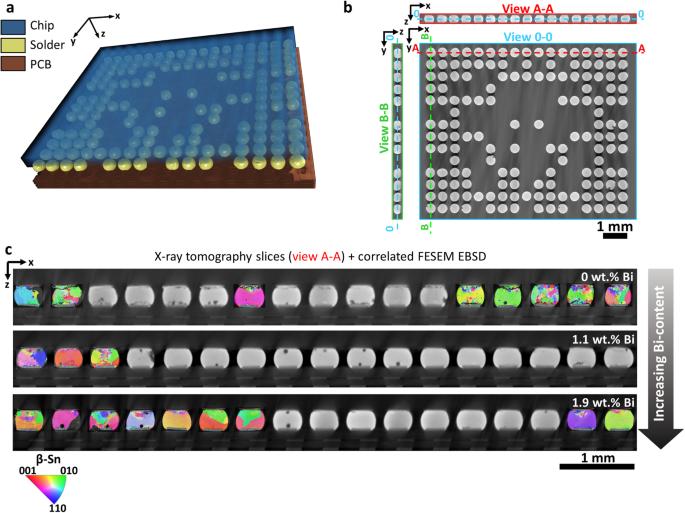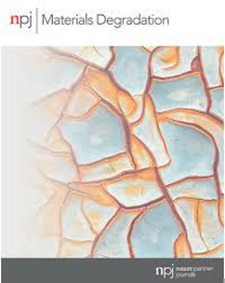对 SAC305-Bi 焊球晶间疲劳裂纹的相关性、基于 ML 的非破坏性 3D 分析
IF 6.6
2区 材料科学
Q1 MATERIALS SCIENCE, MULTIDISCIPLINARY
引用次数: 0
摘要
电气元件的可靠连接是微电子和功率半导体行业的一个重要课题。本研究利用三维无损 X 射线断层扫描和专门开发的机器学习 (ML) 算法,对 SAC305-Bi 焊球在板上热循环 (TCoB) 时的裂纹起始和扩展进行了统计研究。我们利用结合了三维 U-Net 模型的多层次 ML 工作流程,从三维 X 射线断层扫描数据中定量分割疲劳裂纹和焊剂孔隙。数据显示,晶间疲劳裂纹是热转印过程中的主要失效机制,而动态再结晶则先于裂纹的产生。此外,我们还发现疲劳裂纹是在表面缺口、焊剂孔隙和印刷电路板金属化侵入处产生的。这项工作结合了大数据分析、ML 算法和对底层材料科学的深入理解,为再结晶和开裂的底层微结构和机械机制提供了重要见解。本文章由计算机程序翻译,如有差异,请以英文原文为准。

Correlative, ML-based and non-destructive 3D-analysis of intergranular fatigue cracking in SAC305-Bi solder balls
Reliable connections of electrical components embody a crucial topic in the microelectronics and power semiconductor industry. This study utilises 3D non-destructive X-ray tomography and specifically developed machine learning (ML-) algorithms to statistically investigate crack initiation and propagation in SAC305-Bi solder balls upon thermal cycling on board (TCoB). We quantitatively segment fatigue cracks and flux pores from 3D X-ray tomography data utilising a multi-level ML-workflow incorporating a 3D U-Net model. The data reveals that intergranular fatigue cracking is the predominant failure mechanism during TCoB and that dynamic recrystallisation precedes crack initiation. Moreover, we find that fatigue cracks are initiated at surface notches, flux pores and printed circuit board-metallisation intrusions. The work provides important insights regarding the underlying microstructural and mechanical mechanisms for recrystallisation and cracking, uniting the aspects of big-data analysis with ML-algorithms and in-depth understanding about the underlying materials science.
求助全文
通过发布文献求助,成功后即可免费获取论文全文。
去求助
来源期刊

npj Materials Degradation
MATERIALS SCIENCE, MULTIDISCIPLINARY-
CiteScore
7.80
自引率
7.80%
发文量
86
审稿时长
6 weeks
期刊介绍:
npj Materials Degradation considers basic and applied research that explores all aspects of the degradation of metallic and non-metallic materials. The journal broadly defines ‘materials degradation’ as a reduction in the ability of a material to perform its task in-service as a result of environmental exposure.
The journal covers a broad range of topics including but not limited to:
-Degradation of metals, glasses, minerals, polymers, ceramics, cements and composites in natural and engineered environments, as a result of various stimuli
-Computational and experimental studies of degradation mechanisms and kinetics
-Characterization of degradation by traditional and emerging techniques
-New approaches and technologies for enhancing resistance to degradation
-Inspection and monitoring techniques for materials in-service, such as sensing technologies
 求助内容:
求助内容: 应助结果提醒方式:
应助结果提醒方式:


